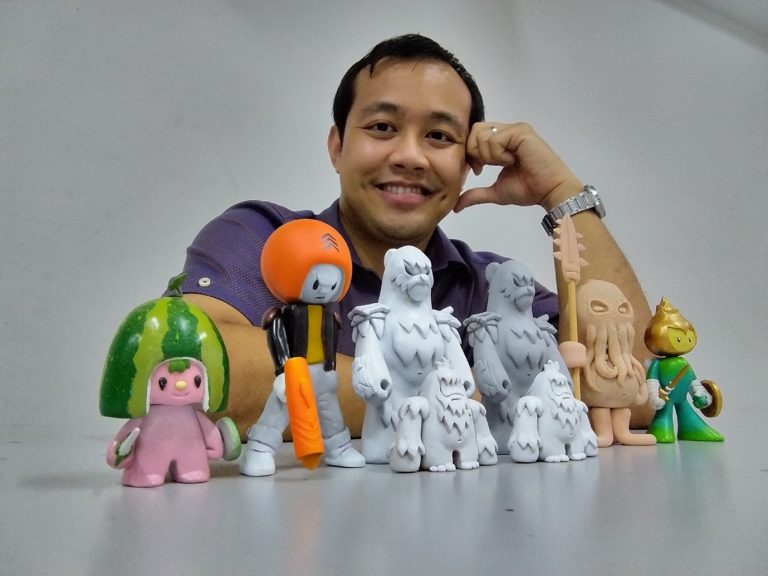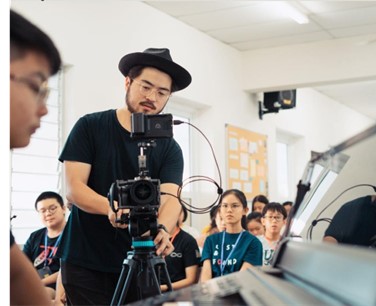In this insight piece, we debunk the facts and myth behind the popular stereotype of “the starving artist”. We speak to three creatives to find out more about what it’s like to be in their shoes.
By Clara Ling
In between the euphoric highs of art exhibitions, installations, performances, art production, and so on, what an artist may battle against is a sense of darkness, a suffering that creatives have been warned of from the moment their artistic aspirations began. While it’s considered rude to ask someone their monthly salary, digging into the bank account of an artist is something people still question or are curious about. How do artists survive juggling between creating art and making ends meet?
A Battle Between Survival and Passion
For as long as an artist can remember, the narrative of a career in the arts has been inextricably tied to a life of juggling between daily survival and the desire to continuously create art. There is a constant grappling between creating art versus reality: the need to survive. In the art scene, you embark on the road less taken, you do both or you sweep that passion under the carpet. Of course, not every artist’s journey is easy or similar.
To support his dream as a toy designer, Stanislaus (Stan) Henson Anak Henry Awan, founder of Odd Critters Studio, works full-time as an Art & Design teacher to create the financial stability needed to keep producing his toys. For Stan, time is a great challenge due to the consistent need to juggle between a full-time job, creating art, keeping his sanity, and staying healthy. There have been times when Stan had to halt his toy production due to financial and time constraints. However, Stan was quick to dive into a backup plan before further losing his passion altogether.
“Nowadays, with the existence of social media, online marketing platforms, online auctions, and connections, the chances to be noticed and to be successful are higher than before. If someone wants to be successful in art, it needs to be done as business and not as leisure. [You] need to branch out into merchandise, branding, services, and more. Relying on one channel for a source of income is not sustainable,” says Stan.
And that’s what Stan has done. Recently, Stan was invited by the Brooklyn, New York-based company Stormy Vault to display his designer toys for their Evil vs Superhero Show. The toy he sculpted was based on a spawn comic character with the title “Taming the Violator”.

Stan and his collection. Photo courtesy of Stanislaus (Stan) Henson Anak Henry Awan
For Lawrence Chin, a writer, actor and director, it takes a balance in making art a priority and a making a living at the same time—he works as an insurance agent to give him flexibility. “Because I love performing arts so so so badly, I spend too much time on creating, to the point I forget about going out to look for new clients. I’m making way less than I’m capable of from insurance because I don’t want to sacrifice my art for money,” he comments. Because of his hard work and perseverance, he has won awards such as Short+Sweet Audience Choice Award 2014 and 2015, Short+Sweet Best Script Award, and The Mercedes Creative Award 2019.

Performance artist, Lawrence Chin. Photo courtesy of Lawrence Chin.
While different artists navigate their paths differently and some really struggle to make ends meet, does this really mean that there is no hope at all to survive?
The Rebellion Against Stereotype
Ronson Poy, a local filmmaker, photographer, and videographer who founded LIS upon graduating from Taiwan, embarked on a journey that few people ever imagined—making art his full-time job. It all started with an idea to portray the journey of life, to tell untold stories of people around him. He took these ideas and filmed parts of people’s lives in a few countries such as Russia to create a space to discuss what it means to be a human on earth. The start of the journey was not easy as he faced challenges financially, but he insisted on doing art and nothing else.
“Life is short, life is exciting, life is vulnerable, life is wonderful, life is…Life is what you think it is,” says Ronson. His perseverance, his persistence in making art has led him to where he is today, still telling stories of people, filming every part of their lives.

Ronson Poy conducting film workshops for youths. Photo courtesy of Ronson Poy
The Tension Between Art Disciplines
Here’s a reality check: certain art disciplines do succeed faster and pay better than others. Looking at art trends these days, there are a few art disciplines that are picking up very fast with digital art, NFT art, and social media platforms being introduced.
“As an artist, I need to find ways to make myself relevant and figure out relevant ways to survive,” Stan explains. Lawrence on the other hand mentions, “[The] Penang Arts Scene was very exclusive (I believe it’s better now)—I found it hard to be part of anything then, maybe I was just a nobody (it’s not like I’m somebody now). But, with more people I know now, I get more opportunities to collaborate with other artists.”
To Leave or Not to Leave?
This topic would mean an unending debate if we do not talk about the final decision: should the goal, in the end, be to be able to leave the full-time job, or is it feasible to want to do both? Perhaps the deepest desire of an artist is to be able to call himself a “full-time, self-sustaining” artist. But how does one simply do that?
Stan comments about the high cost in the designer toy industry where moulding and casting causes the product to be very expensive. Sustainable methods are needed to survive. “I am still learning 3D printing methods and digital art. Nowadays, in most homes, space is becoming limited. I am aiming to scale down my designer toys into mini collectibles. I want to be able to mass produce my designer toys and make them affordable for most people,” Stan continues. And with the advancement of the art world, the increase in competition just makes the entire scene even more challenging.
For Lawrence, survival in the art scene means letting your art be made known. “I threw myself out there and focused on creating art that I believe in. Somehow, I started meeting other artists and groups that are exploring some collaborations with me.” His goal at the end of the day is to be able to pay his actors well because of the value of art itself. “I work very hard to get sponsorship and find ways to sell tickets whenever I have a show. I think artists need to learn how to be a businessman too—I guess it’s part of being smart and aware of the reality,” Lawrence adds. He agrees that making art involves a lot of hard work, talent, support, and dedication. While some call it luck, Lawrence redefines it as opportunity. “An artist must always be ready, be at their best at all time, just in case an opportunity comes by.”
A Red Alert
It is a warning sign for the arts scene in Malaysia that the majority of Malaysians are not mature enough to see that art makes a society and country a better place. People do enjoy art—but to pursue it is another question.
“Parents don’t mind paying for their little kids’ ballet or drawing classes, but they only want their kids to have a hobby, not a passion. So they don’t see a need to expose them more to the art scene. I believe the Government is trying to grow the art scene in Malaysia. But, do we have the right people there to make the right decisions for the art scene?” Lawrence also adds, “[Before art helps an artist to make money] remember that people who work as waiters adjust their lifestyles according to the money they make. Artists need to understand that too. It’s a vocation we have chosen, it’s a journey we have chosen.”
There are in fact exciting and sustainable alternatives to the starving artist stereotype. It begins with a change of mindset, seizing opportunities, and failing forward. Thriving artists are born with tools as simple and mundane as a sheet of paper and a hint of creativity. At the end of the day, the goal of an artist is to put their best foot forward in every path. Nobody is said to be guilty whether or not they choose the safer path or the road less taken.
Clara Ling has been involved in art writing, research, and publishing since finishing her Masters in Fine Arts. She is currently pursuing her PHD in Universiti Malaya where her research route involves transdisciplinary art practices.

